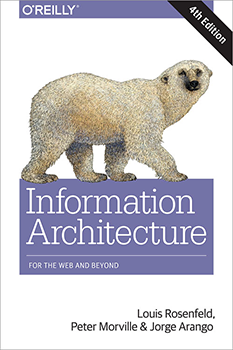Jorge Arango
Design for understanding
How Information Architecture helps create environments that are understandable and useable by human beings.
Register for the O’Reilly Design Conference, which will be held January 19-22, 2016, in San Francisco. Jorge Arango will be speaking at the event about information architecture and semantic environments.
Editor’s note: This post is an excerpt from “Information Architecture, 4th Edition,” by Jorge Arango, Louis Rosenfeld, and Peter Morville.
We only understand things in relationship to something else. The frame around a painting changes how we perceive it, and the place the frame is hanging in changes it even more: we understand an image displayed in New York’s Museum of Modern Art differently than one hanging in a shared bathroom in a ratty hotel. Context matters.When designing an information architecture, we are engaging in a new type of placemaking: one that alters how we perceive and understand information. As with (building) architects, information architects are concerned with creating environments that are understandable and useable by human beings, and which can grow and adapt over time to meet their needs and those of their organizations.
In the previous chapter, we saw how the lens of information architecture can help designers make stuff easier to find by setting it in structures made of language. Now, we’ll explore how these structures can make stuff more understandable by molding the context that we perceive it in.
A sense of place
You get out of bed. You stumble clumsily to the bathroom for a morning toilet, then walk to the kitchen to brew a cup of coffee and toast some bread. It’s not even 6 a.m. yet, and you have already transversed three distinct places with different uses and configurations: bedroom, bathroom, and kitchen. Read more…

